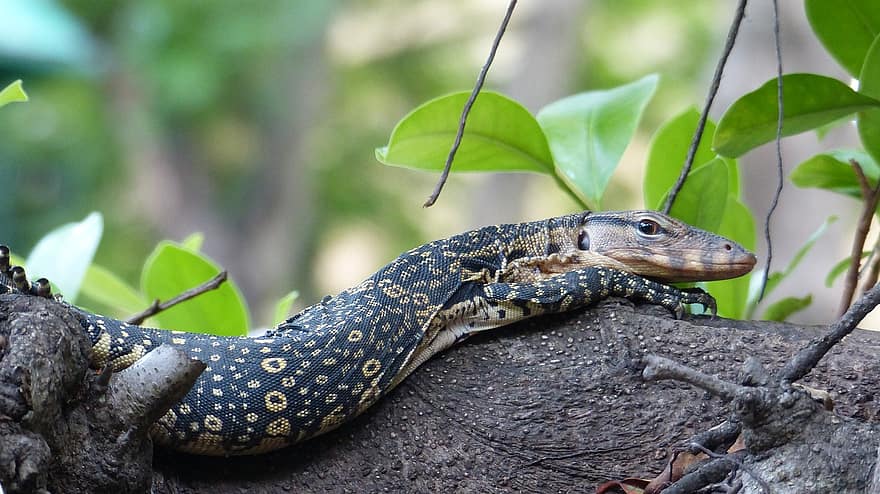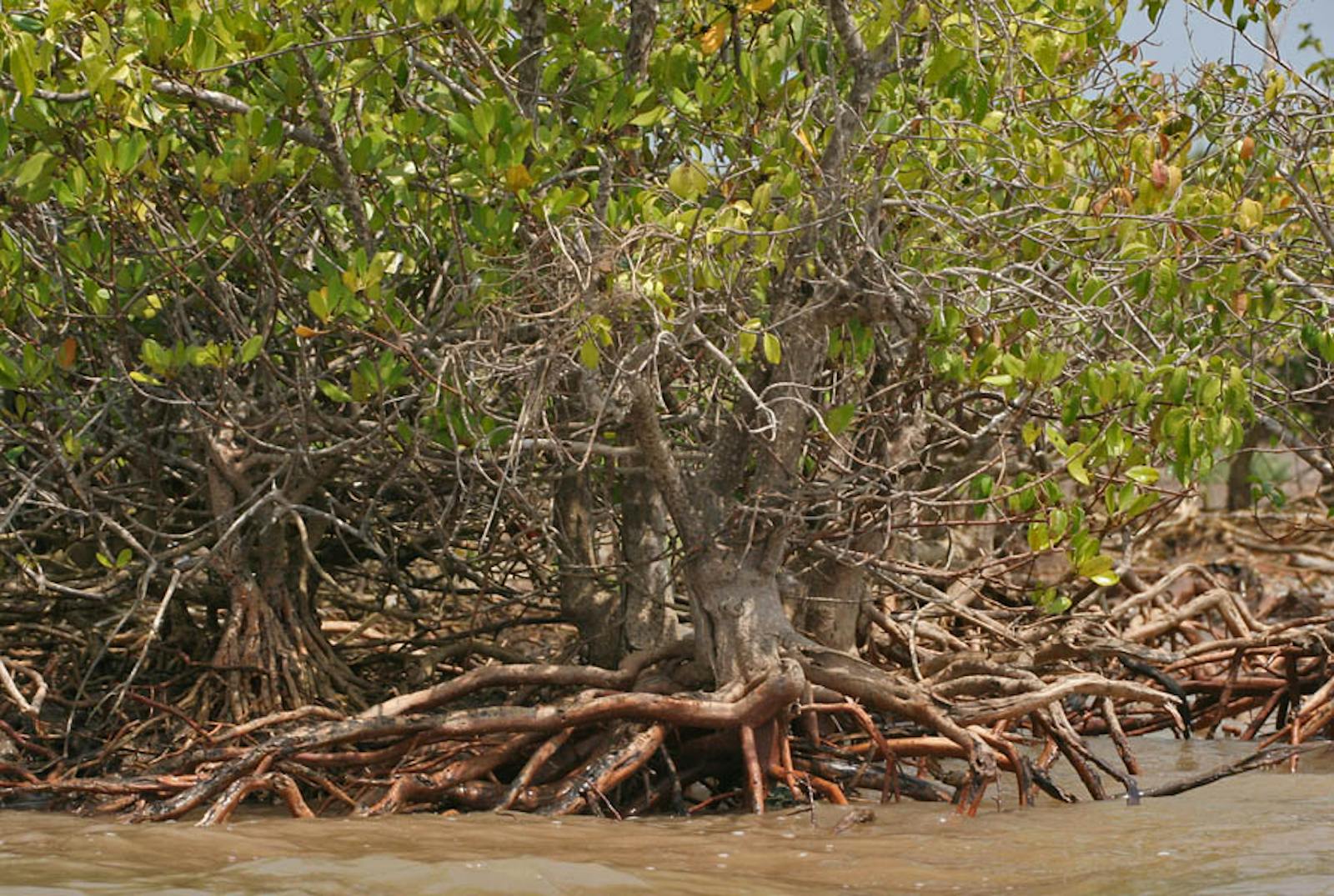Godavari-Krishna Mangroves
The ecoregion’s land area is provided in units of 1,000 hectares. The protection goal is the Global Safety Net (GSN1) area for the given ecoregion. The protection level indicates the percentage of the GSN goal that is currently protected on a scale of 0-10.
Bioregion: Northern Deccan & Odisha Tropical Forests (IM7), Greater Deccan-Sri Lankan Forests & Drylands (IM8)
Realm: Indomalaya
Ecoregion Size (1000 ha):
702
Ecoregion ID:
316
Protection Goal:
18%
Protection Level:
10
States: India
The Godavari-Krishna Mangroves along the east coast of the Indian subcontinent are the first lines of coastal defense against the frequent cyclones and tidal surges that strike the region during the monsoons. But mangroves also perform a multitude of other ecosystem functions and services, most notably as a spawning ground, nursery, and grow-out area for larvae and juveniles of fishes and shell-fish from the near-shore and off-shore ocean habitat.

The flagship species of the Godavari-Krishna Mangroves ecoregion is the water monitor lizard. Image credit: Creative Commons
The ecoregion extends as a narrow band along the middle-region coast of the Indian subcontinent. It forms larger patches in the estuaries of the Godavari and Krishna rivers, two of the larger rivers flowing east from the vast, arid Deccan Plateau.
The climate is seasonal, and influenced by the monsoons; the southwest monsoon from June to September brings over 600 mm of rainfall, while the northeast monsoon from October to December brings over 300 mm of rain, with some intermittent rainfall during the rest of the year. Temperatures range from 24 to 32ºC, and are buffered by the proximity to the ocean climate.
Floristically, these mangroves are only moderately high in species richness. There are in total 35 mangrove tree species, of which only 16 are considered to be true mangroves in that they require both sea and river water. The undisturbed mangrove forests have a dense canopy and a tangled root system, with an undergrowth of saplings of the canopy trees. The characteristic trees include species of Avicennia, Suaeda, Rhizophora, and Bruguiera; the typical genera of Asia-Pacific mangroves. In addition to the mangrove species, there are several mangroves associates: a host of trees, shrubs, herbs, and climbers and vines that add structural complexity to the forests.

Painted stork. Image credit: JJ Harrison, Creative Commons
These forests are habitat for many vertebrates and invertebrates. The larger predators here are reptiles, including the saltwater crocodile and water monitor lizard. The mammalian predators, compared to other ecoregions, are mid-sized and include the golden jackal, fishing cat, and smooth-coated otter. The bird fauna is represented by over 140 species, and include threatened species such as the lesser florican, flamingos, spot-billed pelicans, and charismatic species such as spoonbills with their odd, spoon-shaped bills and painted storks with the striking black, white and pink plumage.
The smaller, cryptic fauna is even more interesting. From the mudskippers, an air-breathing, highly territorial fish, to hermit crabs and fiddler crabs, the mangroves are a storehouse of vertebrates and invertebrates with fascinating natural histories and ecological adaptations. The banded archerfish is one such species that lives in the water, but has adapted to hunt its food out of water. With an average size of about 20 cm, this small silver fish with black vertical bands is able to shoot a jet of water about 2 to 3 meters out of the surface to knock down its prey, usually insects, from overhanging branches into the water. It is then able to reach the prey within milliseconds. Interestingly, these fish are able to target their prey with great accuracy while compensating for light refraction at the water-air surface.
-_Adult_with_Immatures-CC-J%20M%20Garg-2009.jpg)
Spot-billed pelicans. Image credit: J M Garg, Creative Commons
Unfortunately very little of these mangroves are protected, and almost all of the remaining forests have been cleared or degraded. Most of the clearing has been to create shrimp farms and for agriculture. Trees are felled for timber and to make charcoal. As a result, coastal erosion and storm and tidal surge-induced disasters are now widespread.
Assessments to restore the mangroves have been made, and the recommended priority conservation interventions are to: 1) restore the mangrove habitats; 2) engage the local communities as part of the regeneration project, and 3) invoke India’s strong laws on mangrove conservation to protect the mangroves in the future.
Citations
1. Ravishankar, T., Gnanappazham, L., Ramasubramanian, R., Sridhar, D., Navamuniyammal, M. and Selvam, V., 2004. Atlas of mangrove wetlands of India. Part 2- Andhra Pradesh. M. S. Swaminathan Research
2. Ghosh S, Bakshi M, Bhattacharyya S, Nath B, Chaudhuri P (2015) A Review of Threats and Vulnerabilities to Mangrove Habitats: With Special Emphasis on East Coast of India. J Earth Sci Clim Change 6:270. doi: 10.4172/2157-7617.1000270
3. Wikramanayake, E, E. Dinerstein, et al. 2002. Terrestrial Ecoregions of the Indo-Pacific: A Conservation Assessment. Island Press.


